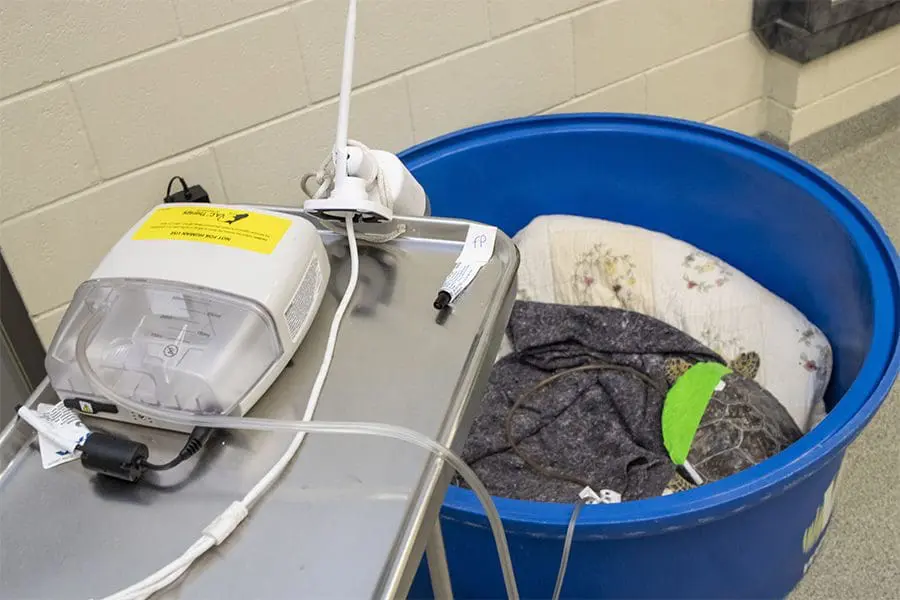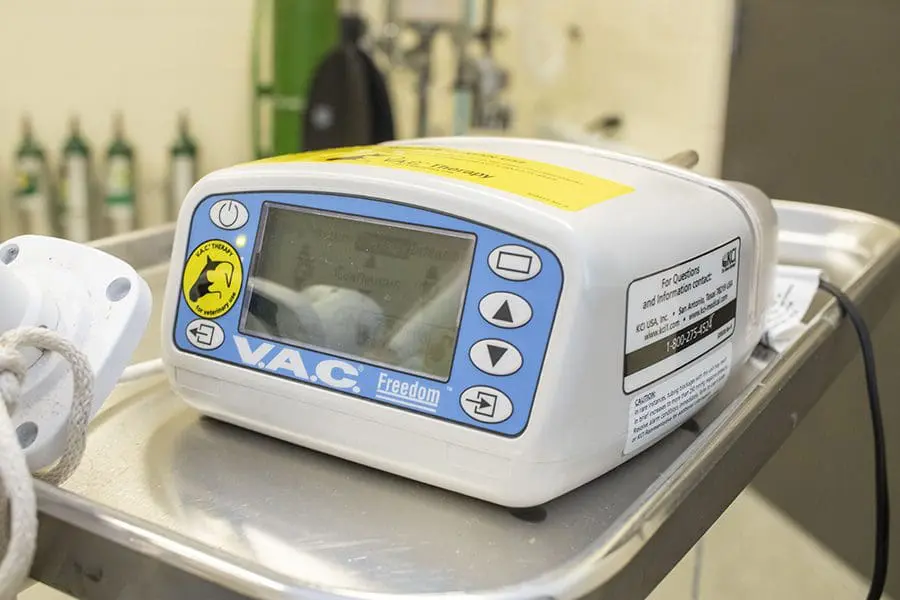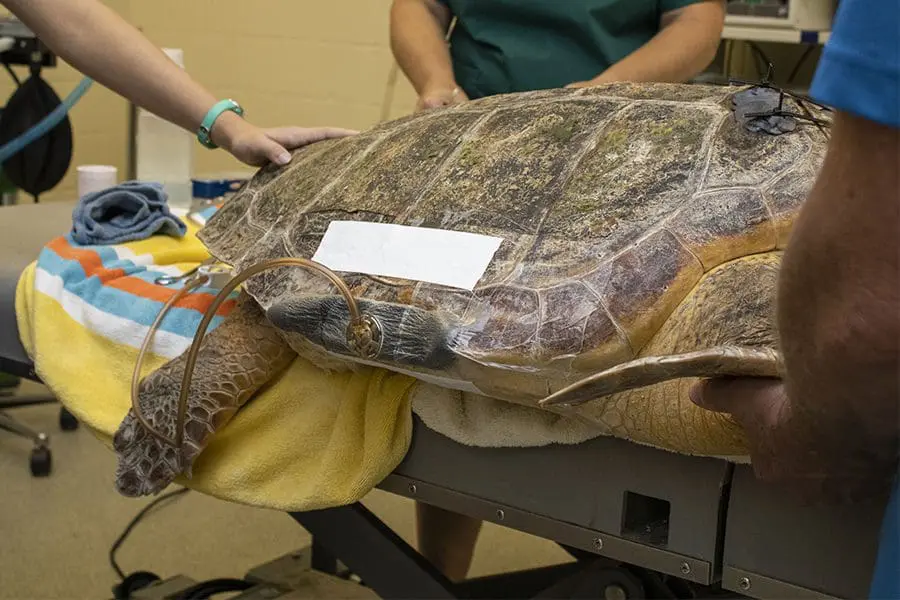

Sea turtle Spumoni receives NPWT inside a large blue bin.
Patients often arrive at our Sea Turtle Healing Center after being injured by boats or predators and left with large wounds. Other times, we have to perform surgery on our patients, leaving them with surgical sites that need to heal. In these cases, our staff employs a treatment called negative-pressure wound therapy to help nurse these sea turtles back to health.
Also known as NPWT or vacuum-assisted closure, this technique is used in both human and veterinary medicine to treat harder-to-manage injuries. By creating negative pressure over the wound, NPWT reduces swelling and removes fluids from the affected area, promoting improved blood flow and new skin cell growth.
Before receiving NPWT, a patient is given a mild sedative and the wound is cleaned. A sponge is placed on top of the wound, and a bandage is applied over the sponge to seal off the area. A suction tube connects the bandage to a machine and the process begins. NPWT can be adjusted for pressure, intensity and frequency.

A NPWT machine lays on a table at the Healing Center.
Juvenile green sea turtle Spumoni came to us on August 21 after stranding on Marineland Beach in Flagler County. Because this sea turtle has a large load of fibropapillomatosis (FP) tumors, Spumoni was transferred to our facility, the only center in the area to treat FP patients. This patient was found wrapped in fishing line, some of which had gotten caught on some of their tumors. After settling into our Healing Center, Spumoni began passing the line, which eventually stopped moving. Ultrasounds revealed there was twisting of the intestines, and after much discussion, our team decided to perform surgery to clear the line from their GI tract.
Spumoni was given time to heal from surgery, but because the surgical site is next to their rear flippers, the area is hard to keep sutured close. Although we did everything we could to promote healing, Spumoni’s surgical site opened up twice following the procedure. After the second time, there was little healthy tissue left to close back up the site, so we decided to use NPWT on this sea turtle.
Spumoni underwent one round of NPWT, but in other individuals, the treatment is done multiple times until the wounds are healed. A session lasts two to three days, and the patient is dry docked—or kept out of the water—for the duration of the treatment. Although Spumoni is our only current patient who received NPWT, we have used it on other sea turtles in the past.

A past loggerhead patient received NPWT after a predator interaction.
Staff report that Spumoni is healing great and is a wonderful patient. Our Healing Center is always on the lookout for innovative ways to ensure its patients receive quality care.
The Sea Turtle Healing Center cares for sick or injured sea turtles found primarily along the nearby Florida coast. While this facility is not open to the public, the effects of its work impact local sea turtle populations. An in-county facility means a shorter drive for patients, resulting in less stress and quicker treatment for distressed turtles.
Have you found a sea turtle that needs help? Visit this page or call the Sea Turtle Preservation Society at 321-206-0646.
Want to help the Sea Turtle Healing Center? Support our Zoo, or view our Healing Center’s wishlist.